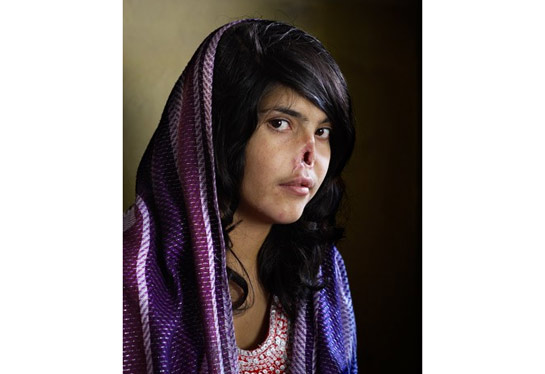It is that time of the year again

The World Press Photo of the Year (WPPh) selections have been announced, and - just like every year - there is considerable debate about some of them. Perhaps not that surprisingly, the World Press Photo of the Year grand prize went to Jodi Bieber (congratulations!), and perhaps even less surprisingly, various people voiced their discontent. The WPPh announcements have become the Pavlovian ringing of the bell, haven’t they? (more)
Jim Johnson said the top prize had been given for “propaganda”, as did Benjamin Chesterton of duckrabbit fame (updated below). I have a lot of respect for both Jim and Benjamin, but I think they’re wrong here. I am fully aware of Time Magazine’s use of the photo to bolster the war in Afghanistan, but that fact does not make the photo a piece of propaganda. There seem to be way too many shades of grey in this whole debate for simple decisions. And even if we assumed it was propaganda - would it be so wrong to pick a photo that will generate some debate? Don’t we need more debate about Afghanistan, our war there, and especially how our media portray/sell us the war - and not less?
Speaking of portraying a war, Damon Winter’s Hipstamatic Afghanistan images came third, and this choice triggered an even larger debate (is it still photojournalism or just photography?, here’s dva’s take), and Winter eventually defended his choices in a blog post at the NY Times. I can’t escape the feeling that if anybody would have to justify the use of these images as photojournalism again it’s not the photographer, but the NY Times photo editors, who, after all, love to be so strict about manipulations and photography.
Winter’s post is interesting, though. Let’s ignore the question whether seeing yet another story about the lives of US soldiers in Afghanistan is so interesting. The main issue, of course, is whether or not these photographs were “manipulated,” or more accurately whether they were manipulated within the bounds of what people usually do. The real problem is that you cannot define this (compare this earlier post), so you can’t get around these kinds of debates (which, by their nature, never lead to a real conclusion). As I’ve argued here, there are ways around this whole problem - but they don’t involve the photographer: It’s a question of image use and of our own understanding of what images say and how.
That all said, that “Hipstamatic” app is not just some application that easily compares with standard dodging and burning. First of all, Winter writes
This is not a case of taking an image and applying a chosen filter later. A photo is taken and then you must wait up to 10 seconds, while the image is processed, before you can take the next one. In processing, every image receives what seems to be a pretty similar treatment: a color balance shift, the burning of predetermined areas of the frame and increased contrast.That doesn’t make any sense. If the software applies the filter after you take it (during those ten seconds), then it literally applies a chosen filter later. The “later” just doesn’t happen in your studio, on some computer.
But the main problem here is not so much the use of that app, but what it does. First of all, we could imagine Winter taking photos with his iPhone sans that app. I don’t see anything wrong with that. That would be like taking photos with whatever other camera one can think of. But the “Hipstamatic” app - that just reeks way too much of Urban Outfitters and of trying to produce “cool” photos. Our hip war? I am pretty certain that’s absolutely not the message the photographer wanted to convey, but unfortunately running perfectly fine iPhone photos through that app produced just that look. The war is basically being romanticized. I can’t escape the feeling that that is what most people have a problem with.
Lastly, there’s also a bit of a debate about Michael Wolf’s Google images. Again, dva’s take is not to be missed. I’m with Matt that it’s basically street photography where the photographer didn’t leave the house (I’m not so interested in that whole appropriation debate). But to call this reportage or even journalism - that’s a bit of a stretch.
Update (14 Feb 11): David Campbell’s take on Jodi Bieber’s photo
Update (14 Feb 11): Benjamin clarifies: “I would like to point out that I have never said the photo itself is a ‘piece of propaganda’, nor that it had been awarded for services to propaganda.”
Update (15 Feb 11): More writing on the same subject, by Greg Ruffing.